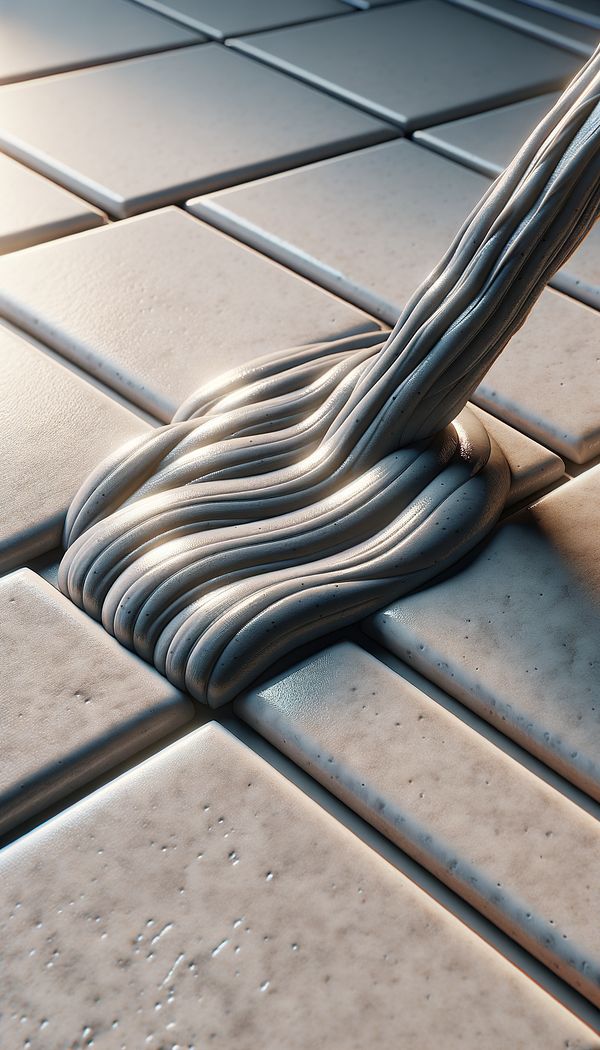What is Grout?
Grout is a dense fluid used to fill and seal the joints between tiles.
Description
Grout is an essential component in tile installation and serves multiple purposes, including filling gaps, providing support, and protecting against moisture and dirt. It is made from a mixture of water, cement, and sand, although there are also epoxy and urethane-based varieties available for specific applications. The selection of grout type depends on the project's requirements, such as the desired durability, resistance to chemicals, and ease of maintenance.
When applying grout, it is important to ensure that it is correctly mixed and applied to achieve a smooth and uniform finish. Grout comes in a range of colors to match or contrast with the tile, enhancing the overall appearance of the tilework. Proper preparation of the tile surface and careful application can greatly influence the finished project's aesthetic and functional quality. Over time, grout may become discolored or damaged, and it may require cleaning, sealing, or replacement to maintain the appearance and integrity of the tilework.
Usage
Grout is commonly used in various settings, including bathrooms, kitchens, and outdoor patios. It is applied between tiles on floors, walls, and other surfaces to create a finished look and to ensure the durability of the tile installation. Its application can greatly vary depending on the type of tiles, the area of application, and the desired final appearance.
FAQs
-
What are the different types of grout?
The primary types of grout are cement-based, epoxy, and urethane grouts, each offering different characteristics suitable for various applications. Cement-based grouts are the most common and are suitable for wide-ranging general use, while epoxy and urethane grouts provide enhanced durability, chemical resistance, and are often used in areas requiring stringent hygiene standards.
-
How do I choose the right color of grout?
Choosing the right color of grout depends on the desired aesthetic effect. For a seamless look, select a grout color that closely matches the tile. To accentuate the tile pattern or shape, choose a contrasting color. Consider the space's overall design and maintenance requirements when selecting the grout color.
-
Can grout be replaced?
Yes, grout can be removed and replaced if it becomes discolored, cracked, or damaged. The process involves carefully removing the old grout without damaging the tiles, then applying and sealing new grout. This can refresh the appearance of the tilework and restore its protective qualities.
-
How do I maintain grout?
Regular cleaning with gentle, non-abrasive cleaners is key to maintaining grout. For cement-based grout, sealing it after installation and periodically thereafter can help protect against stains and moisture. Avoid using harsh chemicals that can damage the grout and tile surfaces.
Practical Application
To ensure the longevity and appearance of tilework, choose the appropriate type of grout for your project, carefully apply it following the manufacturer's instructions, and maintain it through regular cleaning and sealing when necessary. Considering the grout color in relation to the tiles and the overall design can greatly enhance the aesthetic appeal of the space.
-
Kitchen & Bath37 articles
-
Materials & Textiles360 articles
-
Construction & Building86 articles
-
Flooring & Carpets48 articles
-
Wall Treatments & Finishes157 articles
-
Bath FixturesBath fixtures refer to the permanent components of a bathroom that are connected to the plumbing system.
-
Festoon BlindA festoon blind is a type of window covering made from fabric that gathers into pleats when raised.
-
WainscotingWainscoting is a decorative wall paneling used primarily in the lower section of a wall.
-
Punch ListA detailed checklist used near the completion of a project to verify all work is done to specifications.
-
Bergere ChairA bergere chair is a large, upholstered armchair with a distinctive enclosed frame.
